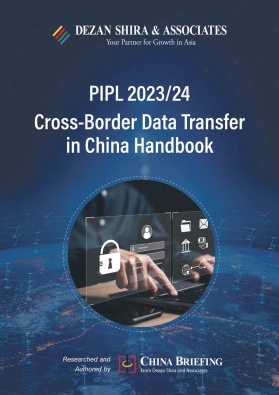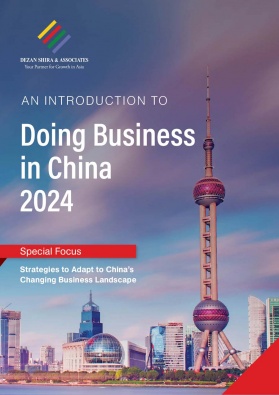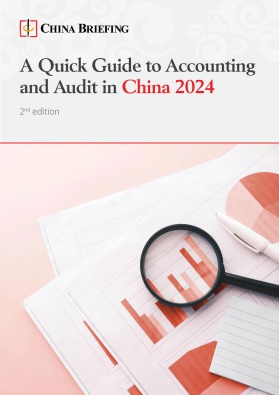China’s 2024 Revision to M&A Regulations: New Filing Thresholds
China’s State Council recently doubled the combined China turnover thresholds that trigger merger filings. This marks the first adjustment since the enactment of the Anti-Monopoly Law in 2008. The SAMR will require filing of below-threshold transactions before launching proactive investigations. Plus, the removal of the “killer acquisition” provision signals a pro-business trend in China’s business landscape.
China’s State Council has released the revised Provisions of the State Council on Declaration Standards Regarding the Concentration of Business Operators, which took effect from January 22, 2024.
The 2024 Provisions were initially proposed by the State Administration for Market Regulation (SAMR) in June 2022. The comparatively slow legislation process indicates the Provisions had been subjected to heated discussion within the government organs.
As one of the major regulations governing mergers and acquisitions (M&A), the implementation of the 2024 Provisions marks a crucial development in enforcing China’s Anti-Monopoly Law (AML). These revisions raise the revenue thresholds for M&A filings in China but also reinforces the SAMR’s authority to investigate M&A deals that could harm competition.
Notably, the 2024 Provisions dropped some specific standards proposed in the 2022 draft that required any deal involving a company with annual China revenues over RMB 100 billion to be subject to review by the authorities. According to analysts, this roll-back was designed to favor the big tech firms originally, but will concurrently benefit all multinational companies (MNCs).
This article delves into the significant revisions to China’s M&A declaration thresholds and their implications, providing crucial insights for businesses and stakeholders involved in merger activities.
What are the changes in the 2024 Provisions?
The turnover thresholds are adjusted upwards
The 2024 Provisions have significantly raised the turnover criteria for the declaration threshold for concentration of undertakings.
The term “concentration of undertakings” refers to any of the following circumstances:
- The merger of undertakings;
- An undertaking acquires control over other undertakings by virtue of acquiring their equities or assets; or
- An undertaking acquires control over other undertakings or is able to exercise decisive influence on other undertakings by virtue of contract or any other means.
Accordingly, the common M&A in business practices all belong to concentration of undertakings. The concentration of undertakings declaration is often called as M&A filings or merger filings.
As per Article 3 of the Provisions, China now mandates a pre-closing merger filing if either of the following thresholds is met:
- The combined worldwide turnover of all parties involved in the transaction surpasses RMB 12 billion (approx. US$1.7 billion) in the last accounting year, and at least two of these undertakings’ individual turnover within China exceeds RMB 800 million (approx. US$111.4 million) in the last accounting year; or
- The combined turnover within China of all parties involved in the transaction surpasses RMB 4 billion (approx. US$567.6 million) in the last accounting year, and at least two of these undertakings’ individual turnover within China exceeds RMB 800 million (approx. US$111.4 million) in the last accounting year.
|
Turnover Thresholds Triggering Merger Filings in China |
|
| Old threshold | New threshold |
|
|
The significant increase in turnover criteria is likely to trigger shifts in the landscape of merger filings. Previously, lower thresholds resulted in a substantial number of transactions being reported to the SAMR, leading to a a consistent upward trend in merger filings, culminating in nearly 800 transactions getting cleared in 2023. However, the introduction of new, higher thresholds is expected to reverse this trend.
This adjustment reflects a strategic effort to streamline the merger review process. Regulatory authorities aim to enhance efficiency while maintaining effective oversight by focusing on transactions that have a more valuable impact on competition.
SAMR has the right to require merger filing for below-threshold transactions that may impede market competition
In addition to raising the turnover thresholds, the 2024 Provisions explicitly authorize SAMR to require merger filing for transactions that fall below the abovementioned thresholds but could still potentially exclude or restrict competition. Only in cases where the transaction parties have failed to make merger filings as required will the SAMR be able to launch the investigation process.
This new provision reiterates that the SAMR has the power to investigate, while also giving enterprises that “do not meet the filing threshold but have or may have the effect of excluding or restricting competition” the opportunity to make corrections.
By allowing these enterprises to make declaration upon receiving the notification from the SAMR, a “buffer zone” gets established, which can mitigate the administrative risk of these enterprises inadvertently misjudging their own circumstances.
On the other hand, the reassurance of SAMR having the power to launch investigations proactively is in alignment with the AML recently amended in 2022.
In 2023, SAMR conducted its first review and approval of a below-threshold transaction, involving two Chinese healthcare firms, Simcere and Tobishi. This scenario indicated the necessity of conducting thorough assessments to evaluate the risks of being called in for an SAMR review – especially for deals of prominence, transformational nature, or involving sensitive industries.
Scaling back the “killer acquisition” provision proposed in the 2022 draft
Another important aspect to note is the drop of the “killer acquisition” provision as proposed in the 2022 draft.
An acquisition is considered a “killer acquisition” when an established company gains control over an innovative company with the intention of eliminating them as a possible source of future competition.
According to Article 4 of the 2022 draft, regardless of reaching the revenue thresholds or not, the transaction parties needed to make merger filings if:
- One of the parties to the merger has a turnover in China exceeding RMB 100 billion (approx. US$13.92 billion) in the previous fiscal year; or
- The market value (or valuation) of the other parties to the transaction is not less than RMB 800 million (approx. US$111.40 million), and its turnover in China in the previous fiscal year accounts for more than one-third of its turnover worldwide.
Ultimately, the State Council opted not to adopt this threshold, likely due to perceived challenges in its implementation and its potential to impede deal-making activity. Originally designed to keep China’s big tech companies in check, such tighter supervision is no longer viable when the economy is under constant pressure and the market valuation of a given party is not a straightforward assessment.
The removal of this killer acquisition provision is good news for all MNCs, as well as for startups that hope to get acquired.
However, the change in the Provisions does not preclude the SAMR from scrutinizing deals considered as killer acquisitions, as the authority retains the right to review below-threshold transactions when they are perceived as a threat to competition in China.
Application period of the 2024 Provisions
The 2024 Provisions took effect on January 22, 2024.
However, for transactions concluded before this date but still pending execution, official guidance on how the new standards apply has not been issued. In these instances, it is advisable to carry out individual evaluations and, if necessary, to commence pre-filing consultations with SAMR to seek clarification.
Summary
In light of the recent adjustments to merger filing thresholds in China, there are several notable takeaways to consider.
Firstly, the significant increase in turnover thresholds, particularly concerning revenue within China, is expected to streamline the merger review process by reducing the number of mandatory filings.
Secondly, the exclusion of proposed filing standards for killer acquisitions, which initially included criteria such as “market value” and “turnover ratio,” signifies a shift in approach by China’s SAMR. While these specific standards are not incorporated in the final version of the Provisions, SAMR retains discretion to investigate mergers that could potentially have anti-competitive implications.
However, ambiguities persist regarding the retrospective application of the 2024 Provisions. The lack of detailed implementation guidance introduces compliance complexities, particularly concerning transactions signed before January 22, 2024.
In conclusion, the increased merger notification thresholds in China will exempt more transactions from the costs and uncertainties of SAMR merger filings. However, it remains essential to note that SAMR retains the authority to investigate transactions below these thresholds even after they have closed. Therefore, parties involved must carefully assess how proposed transactions may impact competition in China and consider the concerns of stakeholders and potential complainants.
About Us China Briefing is one of five regional Asia Briefing publications, supported by Dezan Shira & Associates. For a complimentary subscription to China Briefing’s content products, please click here. Dezan Shira & Associates assists foreign investors into China and has done so since 1992 through offices in Beijing, Tianjin, Dalian, Qingdao, Shanghai, Hangzhou, Ningbo, Suzhou, Guangzhou, Dongguan, Haikou, Zhongshan, Shenzhen, and Hong Kong. We also have offices in Vietnam, Indonesia, Singapore, United States, Germany, Italy, India, and Dubai (UAE) and partner firms assisting foreign investors in The Philippines, Malaysia, Thailand, Bangladesh, and Australia. For assistance in China, please contact the firm at china@dezshira.com or visit our website at www.dezshira.com.
- Previous Article Las “24 medidas” de China para atraer inversión extranjera: Informe de desempeño
- Next Article China’s Foreign Minister Wang Yi to Visit Australia for Trade and Technology Talks








